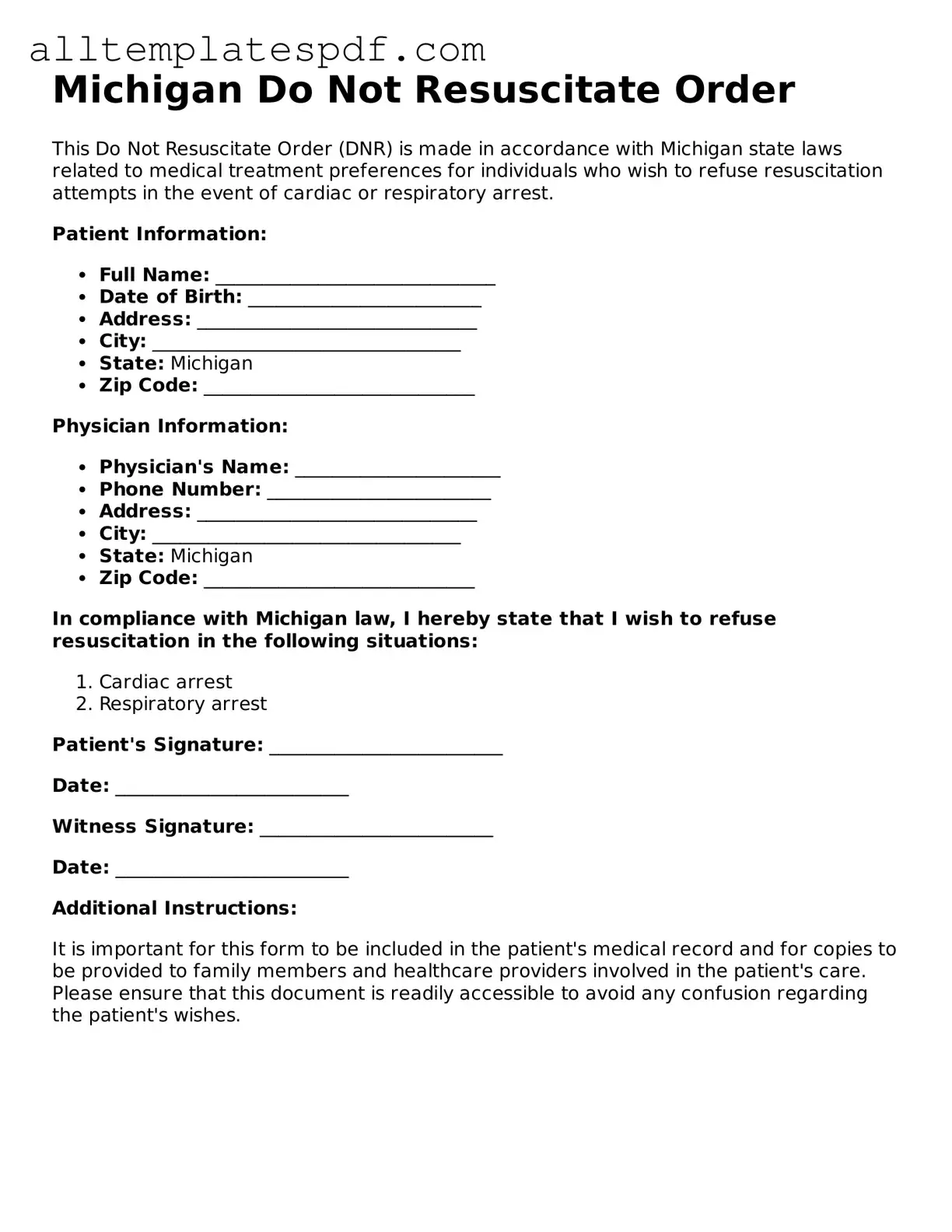Filling out the Michigan Do Not Resuscitate (DNR) Order form is a significant decision that requires careful consideration. Many individuals make common mistakes that can lead to confusion or misinterpretation of their wishes. Understanding these errors can help ensure that your intentions are clearly communicated.
One frequent mistake is failing to provide all necessary personal information. The form requires specific details, including the patient's name, date of birth, and signature. Omitting any of this information can render the document invalid. Always double-check that all fields are filled out completely before submitting the form.
Another common error is not having the form signed by a witness. In Michigan, the DNR Order must be signed by the patient and a witness to be legally binding. Skipping this step can lead to complications when the order is needed. It's essential to ensure that the witness is not a family member or someone who may benefit from the patient's estate.
People often overlook the importance of discussing their wishes with family members. While the DNR Order is a personal decision, informing loved ones can prevent misunderstandings during critical moments. Open conversations about end-of-life preferences can provide clarity and support for both the patient and their family.
Additionally, failing to review the form regularly can lead to outdated information. Life circumstances change, and so do preferences regarding medical treatment. It's wise to revisit the DNR Order periodically, especially after significant life events, to ensure it still reflects your wishes.
Lastly, some individuals may not fully understand the implications of a DNR Order. This form indicates that you do not wish to receive cardiopulmonary resuscitation (CPR) in the event of cardiac arrest. It's crucial to comprehend what this means for your overall medical care and to discuss any concerns with a healthcare professional.
